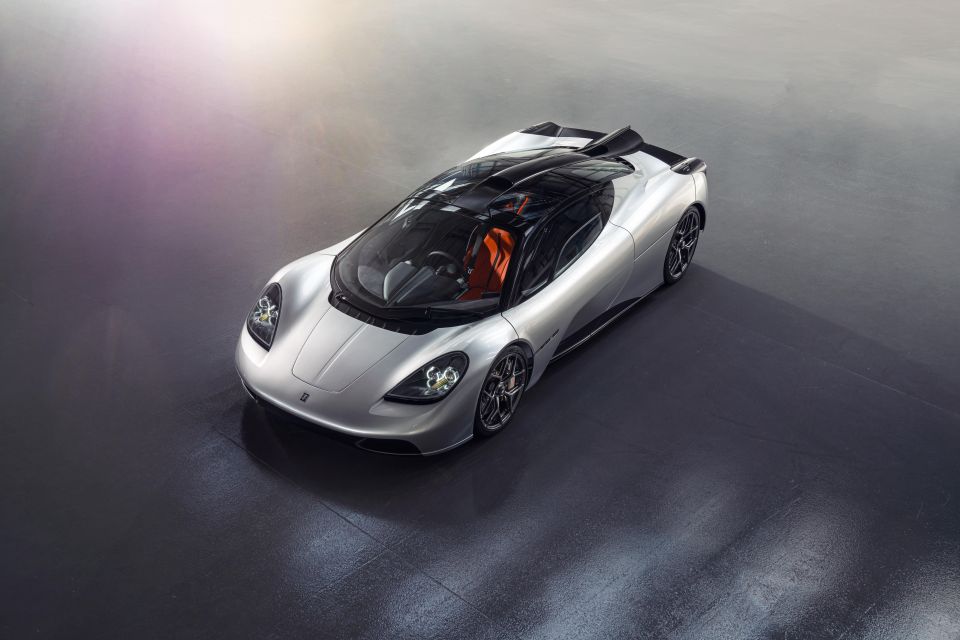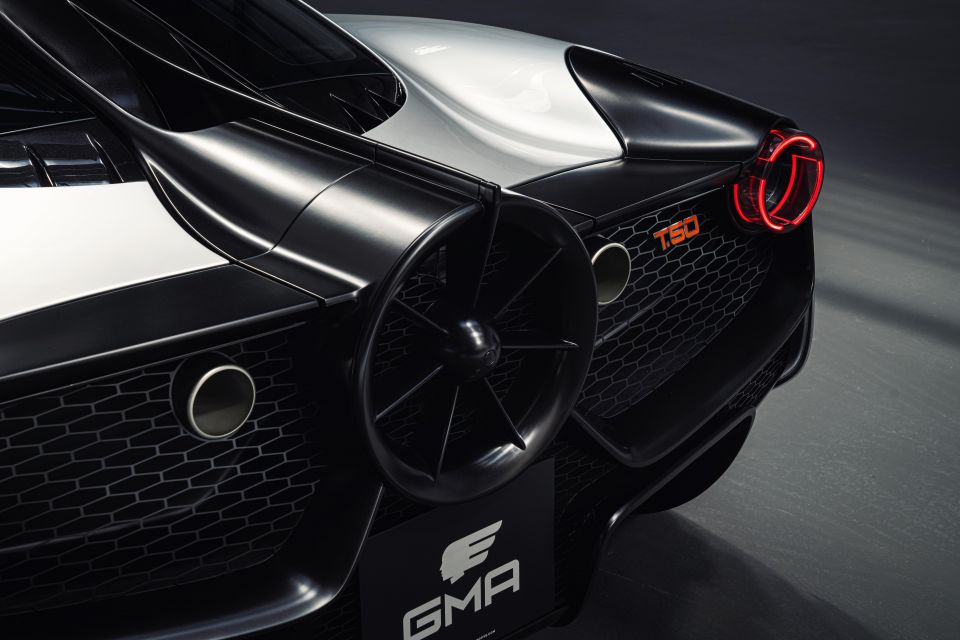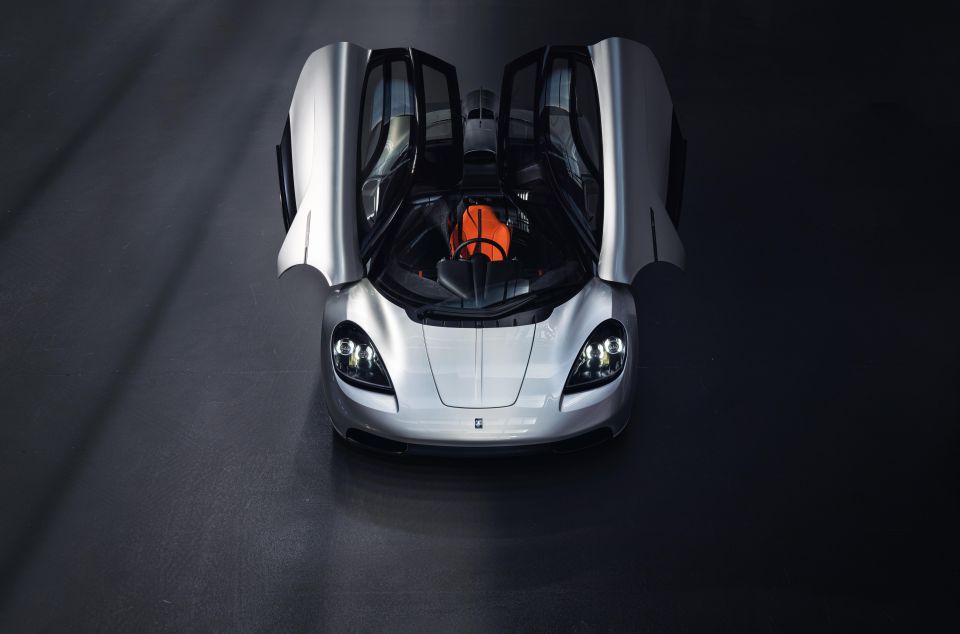

William Stopford
3 Days Ago
The GMA T.50 lightweight supercar has made its debut at Goodwood, with its screaming atmo V12 and central driving position two highlights.

Contributor


Contributor
Do yourself a favour and have a listen to this!
The Gordon Murray Automotive (GMA) T.50 supercar has made its debut at the 78th Goodwood Members’ Meeting in the U.K.
Driven by British racing driver Dario Franchitti, the T.50 blasted around the slightly damp Goodwood Motor Circuit.
The GMA T.50, which was revealed in August 2020, is the spiritual successor to the McLaren F1, also designed by the aerodynamic master Gordon Murray.
In a similar style to the F1, the T.50 has gullwing doors, as well as a central driver’s seat with two outboard seats for passengers or extra storage.
People who were lucky enough to see this supercar at Goodwood were treated to it doing three laps around the circuit.
Its screaming, high-revving engine could be heard the entire time – with its note reminding me of the Lexus LFA.
Powering the T.50 is a bespoke, Cosworth-developed 3.9-litre naturally-aspirated V12 engine that produces 488kW of power and 467Nm of torque.

The power figures might seem to be down in comparison to supercars such as the McLaren P1 and LaFerrari, but this engine doesn’t have any turbo or supercharger, nor hybrid add-ons.
“I have absolutely no interest in chasing records for top speed or acceleration,” said Murray.
“Our focus is delivering the purest, most rewarding driving experience of any supercar ever built – but, rest assured, it will be quick.”
This engine can rev all the way up to a stratospheric 12,100rpm.

It also weighs only 178kg, which makes it the lightest road-going V12 ever built, and packs 122kW per litre which is the best power density of any naturally-aspirated engine.
Although it can rev its head off, GMA says 70 per cent of peak torque is available from 2500rpm.
Just like the F1, the T.50 puts this power to the rear wheels through a six-speed manual transmission. The first five ratios are packed closely together, with sixth gear being a longer cruising gear.
Even though this engine sounds like a masterpiece, the body looks just as good.

Murray took all of his knowledge of aerodynamic design and implemented it into the T.50, with GMA claiming it’s the “most advanced and effective aerodynamics ever seen on a road car.”
A 400mm ‘ground effect’ fan dominating the rear of the supercar increases downforce by 50 per cent in normal driving, and 100 per cent in ‘Braking Mode’.
It can reduce drag by 12.5 per cent in ‘Streamline Mode’, and contributes 37kW combined with the ram-air induction system.

The fan also shaves 10 metres off the braking distance from 240km/h.
Working with the fan are active underbody aero elements, and a pair of dynamic rear spoilers.
Whilst racing around the Goodwood circuit, you could see the rear driveshaft spinning through the large rear diffuser.
There are also camera side ‘mirrors’ like the ones seen on the Honda E, Audi E-Tron and Genesis GV60 – another attempt to make the T.50 as aerodynamic as possible.

Even though there’s all of this aerodynamic genius happening all around the supercar, the T.50 is extremely light.
All up, the total vehicle weight is just 986kg, with the dry weight being 957kg.
None of this remarkable engineering comes cheap with just 100 road-going examples being built, priced from £2.36 million (A$4.38 million) before taxes.
A further 25 track-only versions, called the T.50s Niki Lauda, will also become available once the road-going T.50 run is complete.

These models will be powered by the same Cosworth-developed naturally aspirated V12, this time producing 523kW at 12,100rpm.
It’s top speed will also be 338km/h with the manual transmission swapped out for a six-speed sequential transmission with paddle shifters.
These models are even lighter at 852kg as the T.50s is built around a carbon and honeycomb aluminium monocoque chassis that shares none of its exterior panels with the road car.
MORE: GMA T.50: McLaren F1’s spiritual successor revealed in full MORE: Gordon Murray T.50: Inside the lightweight McLaren F1 successor MORE: GMA T.50s Niki Lauda revealed
Jack Quick is an automotive journalist based in Melbourne. Jack studied journalism and photography at Deakin University in Burwood, and previously represented the university in dance nationally. In his spare time, he loves to pump Charli XCX and play a bit of Grand Theft Auto. He’s also the proud owner of a blue, manual 2020 Suzuki Jimny.


William Stopford
3 Days Ago


James Wong
3 Days Ago


Damion Smy
2 Days Ago


Alborz Fallah
2 Days Ago


Max Davies
2 Days Ago


William Stopford
1 Day Ago